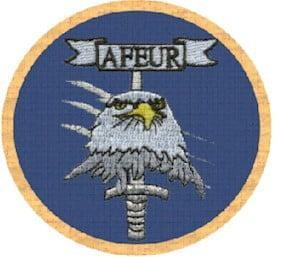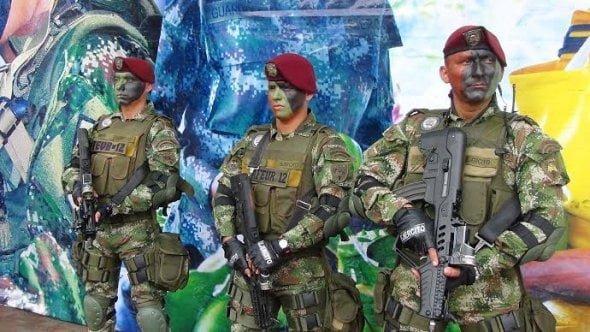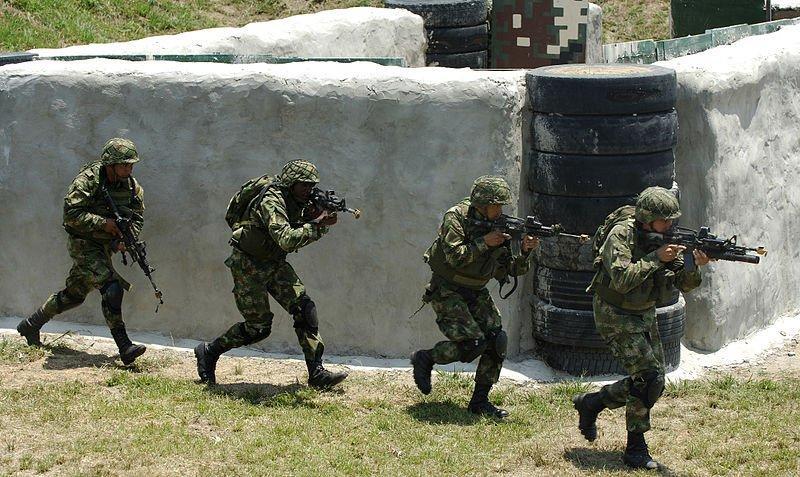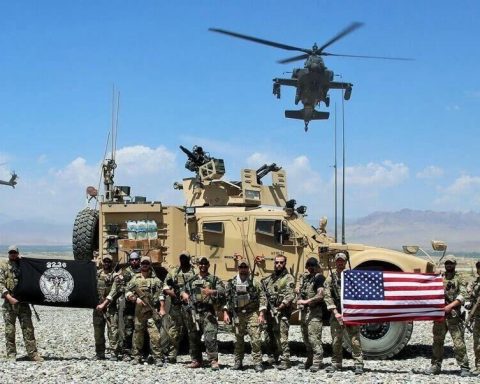Colombia has a long and successful history of special forces, but in 1985, during the Palace of Justice siege, the country’s military units were unprepared for such a situation. The Movimiento 19 de Abril, or 19th of April Movement, captured around 500 hostages, including several Council of State and Supreme Court members. In the ensuing operation, over fifty hostages were killed, including eleven members of the Supreme Court, and eleven soldiers lost their lives. In response to this, the Agrupación de Fuerzas Especiales Antiterroristas Urbanas, or AFEUR, was established on April 8, 1986. This article discusses the formation, training, and role of AFEUR, the Colombian Special Forces group.
Introduction
AFEUR is a small military unit within the Colombian Army with not more than 100 operators. The unit comprises members drawn from the Colombian armed forces, including the army and law enforcement. AFEUR is tasked with hostage rescue and VIP protection and is under the direct command of the top commander of the Colombian Armed Forces. The special operations unit is organized into six fifteen-man squads, each consisting of two officers and thirteen operators.
The rigorous selection process for AFEUR is seven days long, and candidates who pass are sent to a six-month training phase in Facatativa, near Bogota. The training focuses on various hostage rescue situations, such as buildings, aircraft, buses, ships, and trains. Skills covered include fast roping and rappelling, sniping, EOD, heliborne assault, high-speed and offensive driving, and VIP protection.
Mission
AFEUR’s role primarily involves carrying out hostage rescue and VIP protection missions. Members of AFEUR are responsible for protecting the Colombian President when he travels across the country and abroad. During their visits to Colombia, they also provide close protection for VIP guests, including US Presidents Bill Clinton and George W. Bush.

During the visits of these high-ranking officials, AFEUR is responsible for providing the second security ring. This means they are responsible for securing the area around the President or VIP guest to prevent potential threats from getting too close. AFEUR members work closely with other Colombian military and law enforcement agencies to quickly identify and neutralize any threats.
Training
The comprehensive AFEUR training covers various aspects of hostage rescue and VIP protection. One of the key areas of training is handling various hostage rescue situations. Trainees are put through a series of realistic simulations to ensure they are ready to handle any situation during a mission. This is because hostage rescue missions are some of the most challenging and dangerous operations a special forces unit can undertake.
Another important aspect of AFEUR training is fast roping and rappelling techniques. These techniques are used to quickly and efficiently enter a building or other structure from a helicopter or other aircraft. Members of AFEUR are trained to use these techniques safely and effectively to get in and out of a target quickly and without attracting too much attention.

In addition to hostage rescue training, AFEUR members are trained in sniping, EOD, heliborne assault, and high-speed and offensive driving. These skills are essential for AFEUR members to carry out their VIP protection mission. They need to be able to quickly and safely transport VIPs from one location to another and defend them from any potential threats.
AFEUR’s selection process is designed to weed out those who do not possess the skills, determination, and mental and physical toughness necessary to become an elite special operator. Those who make it through the selection phase undergo a rigorous six-month training program.
AFEUR operators must be proficient in a wide range of skills. The training program focuses on various hostage rescue situations, such as buildings, aircraft, buses, ships, and trains. Fast roping and rappelling skills are covered, as well as sniping, EOD (Explosive Ordinance Disposal), and heliborne assault skills. The training also includes hand-to-hand combat, marksmanship, and advanced driving techniques.

Physical fitness is a key component of the training program. Candidates must be in excellent physical condition, capable of completing a grueling obstacle course and performing various physical tasks under stress. They must also endure long periods of standing or crouching, often in cramped and uncomfortable positions, without losing focus or becoming fatigued.
The training also focuses on mental preparation. Operators must be able to think clearly and quickly in high-stress situations and make split-second decisions that could mean the difference between success and failure. They are taught to stay calm and focused, even in extreme danger.
Mission Capabilities
AFEUR is primarily tasked with hostage rescue and VIP protection. They are trained to conduct complex hostage rescue operations in various environments, including urban and rural settings. They can also provide close protection for high-value individuals, such as government officials, diplomats, and foreign dignitaries.
In addition to their primary mission, AFEUR can conduct reconnaissance, direct action, and other special operations missions as required. They are often called upon to assist other law enforcement agencies in Colombia, particularly in counter-narcotics operations.
AFEUR has the most sophisticated and modern equipment and weapons similar units use worldwide. They have a wide range of weapons at their disposal, including various pistols such as the Beretta 9mm, Browning 9mm, and Glock, as well as assault rifles including the M16A2, submachine guns such as the HK MP5, and light machine guns such as the M60 and Galil.
In addition to their standard issue weapons, AFEUR operators are also equipped with various specialized equipment, including night vision goggles, body armor, ballistic shields, and breaching tools. They are also trained in advanced driving techniques and have access to a wide range of military vehicles and aircraft to facilitate mobility.
Notable Operations
AFEUR has been involved in several notable operations throughout its history. In addition to protecting the Colombian President and other high-value individuals, they have been involved in several high-profile hostage rescue operations.
In 1999, AFEUR was involved in the rescue of 27 hostages held by the National Liberation Army (ELN) in the town of Cali. The operation was successful, with all hostages rescued and no casualties among the AFEUR operators.
In 2002, AFEUR played a key role in rescuing former Colombian presidential candidate Ingrid Betancourt, who was kidnapped by the Revolutionary Armed Forces of Colombia (FARC) and held captive for more than six years. The operation involved a daring helicopter rescue deep in the jungle and was widely regarded as a major success for AFEUR and the Colombian military.
More recently, in 2011, AFEUR was rescuing five hostages held by the FARC. The operation involved using a specialized aircraft to drop AFEUR operators into the jungle, where they successfully rescued the hostages without any casualties.





